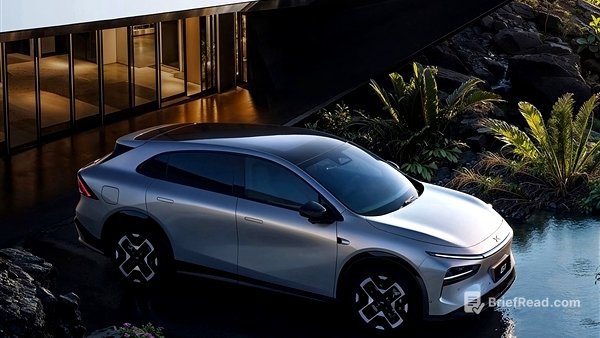TLDR;
Xpeng is launching its new G7 mid-size SUV, touted as the first "AI car" with L3-level computing power. The G7 combines advanced technology with spacious comfort, featuring a futuristic design and innovative features like the "Chasing Light Panorama AR-HUD" developed with Huawei. It will compete with models like the Tesla Model Y and Xiaomi SU7, with pre-sales starting on June 11 and deliveries expected in Q3 2025.
- The G7 is positioned as a family-oriented mid-size SUV with a focus on interior space and advanced technology.
- Key features include the Huawei-developed AR-HUD, Xpeng's self-developed Turing AI chip, and a powertrain similar to the Xpeng G6.
- The vehicle is expected to be priced around 250,000 yuan.
Xpeng G7 SUV: The First "AI Car"
Xpeng is preparing to launch its new G7 mid-size SUV, which Chairman He Xiaopeng is promoting as the first "AI car" equipped with L3-level computing power. The G7 is designed to combine advanced technology with spacious comfort, featuring a futuristic design and a sense of power. It aims to offer a blend of "hardcore technology" and comfortable space.
Design and Dimensions
The G7 is a mid-size SUV with dimensions of 4892mm length, 1925mm width, and 1655mm height, and a wheelbase of 2890mm. Its design includes a black lower surround, high ground clearance, and a large rear spoiler, giving it a youthful appearance. Unlike the Tesla Model Y and Xpeng G6, the G7 adopts a more traditional SUV shape to maximise interior space, particularly second-row headroom, making it suitable for families. Additional design elements include black exterior mirrors, hidden door handles, and privacy glass for the rear windows, along with a panoramic sunroof.
Interior and AR-HUD Technology
The interior maintains a minimalist style, omitting the instrument cluster. A key feature is the "Chasing Light Panorama AR-HUD," developed in collaboration with Huawei. This system integrates Huawei’s hardware with Xpeng’s software to provide enhanced navigation and driving assistance. The AR-HUD boasts an 87-inch display area, projecting information across multiple lanes and covering eight driving scenarios. It uses Huawei’s optical algorithms, systems, and components, combined with Xpeng’s imaging modules and AR composition engine, to overlay digital navigation onto the real-world view, aiding driver decision-making and improving safety. The system offers an 85% NTSC colour gamut, brightness exceeding 12,000 nits, and a contrast ratio of 1800:1, using self-developed LCoS imaging modules and automotive-grade chips. It supports lane-level navigation, assisted driving, and safety alerts, with the AR "light carpet" adjusting for obstacles and slopes, and provides warnings for lane changes and pedestrians, while also assisting in adverse weather conditions.
AI Chip and Powertrain
The G7 will be the first vehicle to feature Xpeng’s self-developed Turing AI chip, described as a "computing power ceiling," capable of driving autonomous driving and intelligent cockpit large models. In terms of powertrain, the G7 will be equipped with the same 218-kilowatt electric motor as the Xpeng G6 and powered by a lithium iron phosphate battery pack from CALB. The exact range is yet to be announced, but low energy consumption is expected to be a key selling point.
Market and Competition
The Xpeng G7 is designed to emphasise intelligence and spaciousness, incorporating numerous new technologies. It is expected to be priced around 250,000 yuan and will compete with models like the Tesla Model Y, Xiaomi SU7, and Zeekr 7X. The G7 is set to debut and open for pre-sale on June 11, with deliveries planned for the third quarter of 2025.









